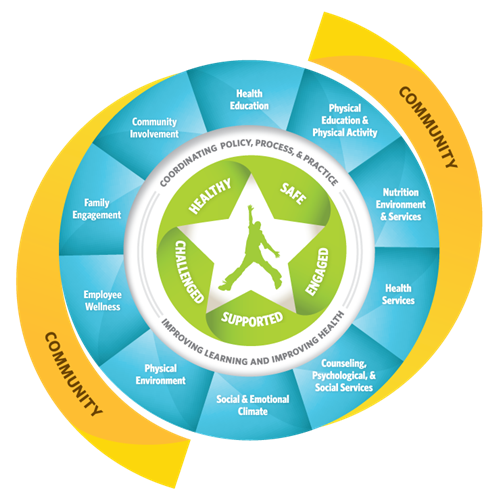Senior Manager
Email Scott Fay
(802) 857-7263
Wellness and Nutrition
Essex Westford School District is devoted to more than ensuring safe and healthy learning environments in our schools: we are committed to providing the best in nutrition and overall wellness education for students of all ages, their families, and the surrounding community.
In 2018, we embarked on a mission: to involve our community in discussions and conversations around crucial elements of wellness. To bolster our District's existing policy, we began involving families in our food and nutrition planning for cafeteria menus and started to incorporate the Whole School, Whole Community, Whole Child (WSCC) model into our operations. This Nutrition Advisory Group has continued to meet and led to the creation of task forces centered on the priorities established from the initial meeting in November 2018.
Related: Policy C9: Nutrition and Wellness Policy on the EWSD Website
Whole Child, Whole School, Whole Community (WSCC) Model
The education, public health, and school health sectors have each called for greater alignment that includes, integration and collaboration between education leaders and health sectors to improve each child’s cognitive, physical, social, and emotional development. Public health and education serve the same children, often in the same settings. The Whole School Whole Community, Whole Child (WSCC) model focuses on the child to align the common goals of both sectors to put into action a whole child approach to education.
What is the WSCC model?
The Whole School, Whole Community, Whole Child, or WSCC model, is CDC’s framework for addressing health in schools. The WSCC model is student-centered and emphasizes the role of the community in supporting the school, the connections between health and academic achievement and the importance of evidence-based school policies and practices. The WSCC model has 10 components:

Physical education and physical activity.
Nutrition environment and services.
Health education.
Social and emotional school climate.
Physical environment.
Health services.
Counseling, psychological and social services.
Employee wellness.
Community involvement.
Family engagement.
Learn more about each of the 10 components on the CDC Website.
Important Contacts
Child Nutrition Program
Scott Fay
Farm to School
Meghan Martin
Coordinator
Email Meghan Martin
(802) 857-7116
District Wellness
Dylan McNamara
Coordinator
Email Dylan McNamara
